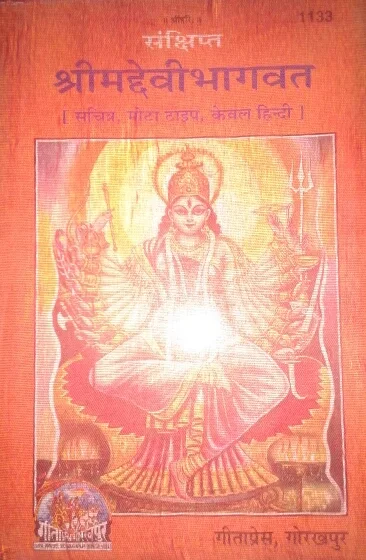क्या आप आत्मा की मुक्ति का पंचकोष-मुक्ति सिद्धांत जानते हैं? (What is the PanchKosh-liberation Theory of Achieving Spiritual Liberation?)
Well, your question is
fully genuine. Most spiritual seekers know only what you know! In fact, their
percentage may be 99.99%, so to say.
It is simply because
neither their spiritual teachers nor they themselves have ever cared to read
ancient Bhaarateey spiritual texts and even if read, these texts have not been
read carefully. Consequently, they have missed the second path…!
much-revered Sanatani puraanic spiritual text, “जिस समय सूक्ष्म,स्थूल और कारण – ये तीनों उपाधियाँ समाप्त हो जाती हैं , उस समय केवल ‘परमात्मा’ ही रह जाता है। तीनों देहों के भीतर पंचकोष सदा स्थित रहते हैं । पंचकोष का परित्याग करने पर बरहमपुचछ की उपलब्धि होती है। ब्रह्मपुच्छ मेरे उस रूप को कहते हैं, जिसका परिचय देते समय श्रुतियाँ ‘नेति-नेति’ कह कर रह जाती हैं...”
The lines in
Hindi quoted above approximately translate into English language as, “When Physical (Sthool स्थूल), Ethereal (Sookshm सूक्ष्म), and Causal (Kaarann कारण) –
these three forms or shareers (bodies) cease to exist, that time only Supreme
Consciousness (Parmaatma परमात्मा) remains in existence. The five-layers (PanchKosh पंचकोष) always exist in three shareers. Upon parting
with these Koshas one attains Ultimate Reality-s tail (Brhmpuchh ब्रह्मपुच्छ). Brhmpuchh is my
ultimate form while describing which the Shrutees become mum after declaring,
“Further (Naetee नेति) Further (Naetee नेति)…”
Dr Swaamee Aprtemaanandaa Jee’s Paranormal
Scientific Theory and Explanation
Each of the three shareers, i.e., Physical (Sthool स्थूल), Ethereal (Sookshm सूक्ष्म), and Causal
(Kaarann कारण); contains five overlapping layers (KOSHAS कोष).
The five overlapping layers (KOSHAS कोष) from ‘down’ to ‘top’ or from ‘in’ to ‘out’ are as
given sequentially below:
1. AnnmayaKosh
2. PrannmayaKosh
3. ManomayaKosh
4. VigyanmayaKosh
5. AanandmayaKosh
For the sake of simple
understanding and clarity, visualize these five Koshas as concentric circles.
The Koshas number 2, 3, 4, and 5 appear as Aura layers around our
Maanav-shareer. The immediate
physical-shareer of Maanav is AnnmayaKosh. In Sookshm realm, the Sookshm-shareer is the
AnnmayaKosh. Whereas, in Kaarann realm, it is the Kaarann-shareer that is the
AnnmayaKosh.
We have to be very careful while
reading the lines. For example, “तीनों देहों के भीतर पंचकोष सदा स्थित रहते हैं ।(The
five-layers (PanchKosh पंचकोष) always exist in three
shareers.)” must not mistakenly be translated as meaning, “five-layers exist
INSIDE three shareers.” Here, word ‘भीतर’ (IN) is used in ‘possessive’ sense. It mean shareer ‘possesses’ or
‘has’ them. The ‘possession’ can be ‘inside’ or ‘outside’ an entity. In our
context, the correct meaning would be one Kosh inside and four Koshas outside.
Brhm ब्रह्म here means
Ultimate-Reality or Supreme Consciousness and Puchh ब्रह्मपुच्छ the tail. Naetee नेति means further.
The Supreme
Consciousness unlike PanchKosh has no definite boundary. It is boundless and
endless. There is no final destination in sight here. That is why even Shrutees
say that one can go on further and further…and there is no end to it!
We can understand the PanchKosh-liberation theory with the help of
following three hypothetical examples.
1. Let us assume that a Maanav X is
able to first cross Annmayakosh
and get into Prannmayakosh. Then
into ManomayaKosh. After that into VigyanmayaKosh and then into AanandmayaKosh. Finally, that Maanav leaves
behind even the AanandmayaKosh. Such
a person’s soul-element shall reach into the tail portion of infinite Supreme
Consciousness at the end of that person’s life in our physical world.
This person’s
soul-element shall not have to make stopovers in Ethereal (Sookshm सूक्ष्म), and Causal (Kaarann कारण) realms.
2. Let us assume that a Maanav Y who has overcome all worldly desires, but
is unable to cross any, many or all these PanchKosh during life time and dies.
Such a person’s soul gets into the Ethereal (Sookshm सूक्ष्म) realm and shall not come back into Physical
(Sthool स्थूल) world again. There in that realm also, that
person’s Sookshm shareer shall have PanchKosh. Suppose the person is able to
discard all these five, that person shall attain spiritual liberation by
merging into Supreme Consciousness. Such a person’s soul-element shall not have
to travel all the way into Causal (Kaarann कारण) realm and wait there for a. chance to get into Supreme Consciousness
either by discarding PanchKosh or Causal
(Kaarann कारण) shareer.
3. Let us take the hypothetical case of a
third person called Maanav Z who has overcome all worldly desires, and is
unable to cross any, many or all these PanchKosh during life time and dies.
This person’s
soul gets into the Ethereal
(Sookshm सूक्ष्म) realm where also the person is
unable to discard all these five, but is able to get into Causal (Kaarann कारण) realm.
This person shall have the chance
there to get into Supreme Consciousness either by discarding PanchKosh or Causal (Kaarann कारण) shareer itself.
- Dr Swaamee Aprtemaanandaa Jee
( Dr Swaamee Aprtemaanandaa Jee's Yoga-Secrets-Revealed Series - 62)
(Fotos: Courtesy Dr Swaamee Aprtemaanandaa Jee)
Key
Words
Dr Swaamee Aprtemaanandaa Jee, ShrimadDeviBhaagwat, Swaamee
Aprtemaanandaa Jee, Physical, Sthool, स्थूल , Ethereal, Sookshm, Naetee , PanchKosh, सूक्ष्म,
Causal , Kaarann, कारण, five overlapping layers, KOSHAS, ब्रह्मपुच्छ , Shrutees, Annmayakosh, PrannmayaKosh, ManomayaKosh,
VigyanmayaKosh, AanandmayaKosh, PanchKosh-liberation theory, Supercausal , Mahaakaarann, महाकारण, Supreme Consciousness, Bhaarateey, Goddess Bhuvaneshwari, पंचकोष, नेति
REFERENCE MATERIAL
REFERENCE MATERIAL




Comments